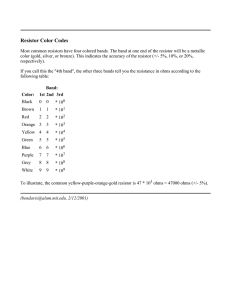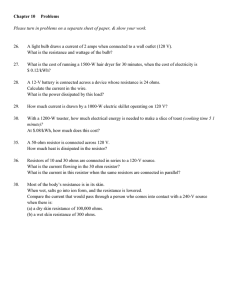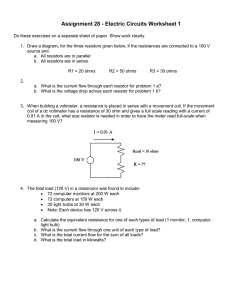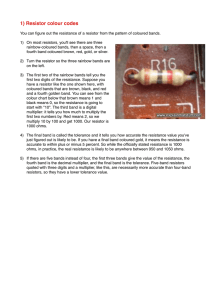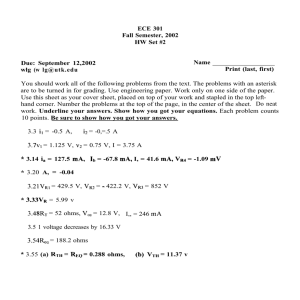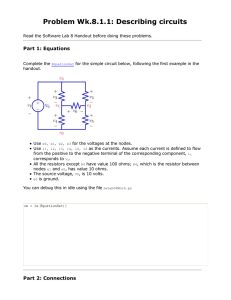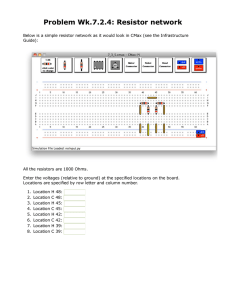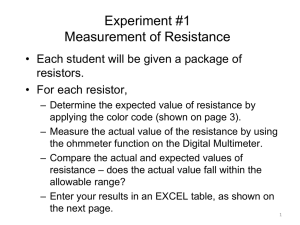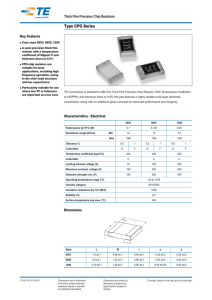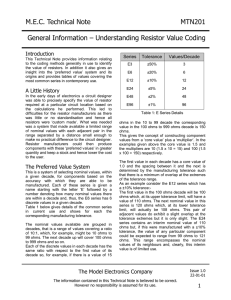1. Electronic Color Codes
advertisement
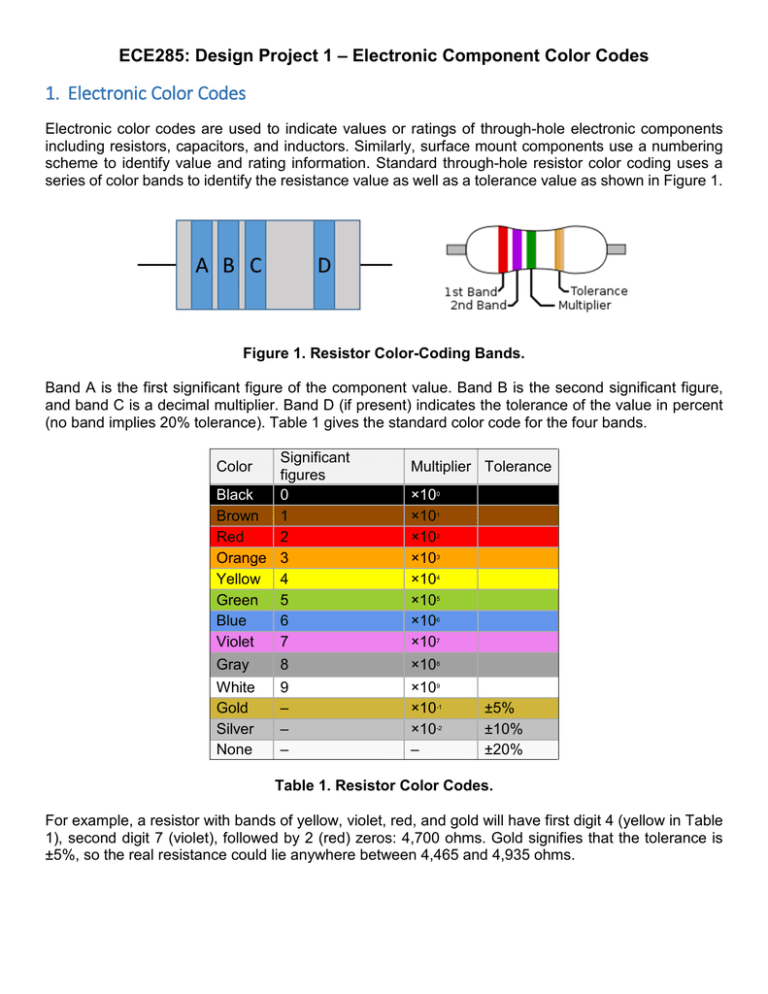
ECE285: Design Project 1 – Electronic Component Color Codes 1. Electronic Color Codes Electronic color codes are used to indicate values or ratings of through-hole electronic components including resistors, capacitors, and inductors. Similarly, surface mount components use a numbering scheme to identify value and rating information. Standard through-hole resistor color coding uses a series of color bands to identify the resistance value as well as a tolerance value as shown in Figure 1. Figure 1. Resistor Color-Coding Bands. Band A is the first significant figure of the component value. Band B is the second significant figure, and band C is a decimal multiplier. Band D (if present) indicates the tolerance of the value in percent (no band implies 20% tolerance). Table 1 gives the standard color code for the four bands. Significant figures Black 0 Brown 1 Red 2 Orange 3 Yellow 4 Green 5 Blue 6 Violet 7 Gray 8 Color White Gold Silver None 9 – – – Multiplier Tolerance ×100 ×101 ×102 ×103 ×104 ×105 ×106 ×107 ×108 ×109 ×10-1 ×10-2 – ±5% ±10% ±20% Table 1. Resistor Color Codes. For example, a resistor with bands of yellow, violet, red, and gold will have first digit 4 (yellow in Table 1), second digit 7 (violet), followed by 2 (red) zeros: 4,700 ohms. Gold signifies that the tolerance is ±5%, so the real resistance could lie anywhere between 4,465 and 4,935 ohms. 2. TASK 1 Write a program that calculates a resistor value from a string of characters entered by the user. The program should first prompt the user to enter a string of characters, then print the calculated resistor value as well as minimum and maximum resistance values based on the entered tolerance. Table 2 gives the character and corresponding color. Character B b R O Y G u V Color Black Brown Red Orange Yellow Green Blue Violet g Gray W o S N White Gold Silver None Table 2. Entered Character and Corresponding Color. The program output should resemble the following: Enter the resistor color code: RGOo The resistance value is 25000 ohms +/- 5% (23750 to 26250 ohms). Your program should continue prompting the user for a color code until the user enters ‘x’ for the first character of the color code. Your program should terminate at that point. Hint: User the char data type and %c format specifier for entering character values. Make sure your code is properly commented with accurate comments describing each section of the code. 3. Task 2 Write a program that prompts the user to enter two resistor color code values, as in Task 1, then calculates the minimum and maximum resistance values for the two resistors in series and in parallel. The program output should resemble the following: Enter the R1 resistor color code: YVbo Enter the R2 resistor color code: RRRN The R1 resistance value is 470 ohms +/- 5% (446.5 to 493.5 ohms). The R2 resistance value is 2200 ohms +/- 20% (1760.0 to 2640.0 ohms). The calculated series resistance is 2206.5 (min) to 3133.5 (max) ohms. The calculated parallel resistance is 356.1 (min) to 415.8 (max) ohms.
